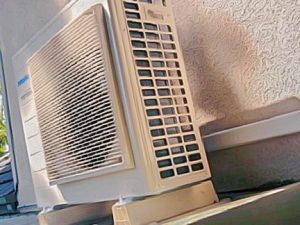 You’d like to know about air conditioning? It has a long and illustrious history beginning in ancient Mesopotamia. Kings of Babylon would often employ aids with particularly low blood temperature to breath into specialised jars, which were left out overnight. The next day, these bottles would be emptied over the ruler in order to keep him cool.
You’d like to know about air conditioning? It has a long and illustrious history beginning in ancient Mesopotamia. Kings of Babylon would often employ aids with particularly low blood temperature to breath into specialised jars, which were left out overnight. The next day, these bottles would be emptied over the ruler in order to keep him cool.
Those with colder breath were known as ‘Ice Dogs’, and were favoured by kings despite their lowly profession. Back in the day, ‘air conditioning repairs’ meant getting a new servant.
Later, in ancient Egypt, the priests spent many years searching for the god or goddess who ruled over ice and snow, but due to the nature of their land were unable to find it. Air conditioning was therefore seen as the only true innovation of man, and was accomplished by skinning crocodiles and coating the walls with their hides, which were said to repel the heat.
Later on, the greeks came to believe in Khione, goddess of ice and snow. Though a minor goddess, it was believed that she was the one who gave them the idea to fill the walls of their homes with water, which would evaporate in the heat. However, the water would sometimes leak through and even shatter the wall, leading to the home becoming flooded.
In ancient China, slaves would make the trek up to the mountains and fill barrels with ice and snow, which would then be rolled back down to the city or town. This would take hours each day, meaning that certain servants were dedicated entirely to the work of carting snow. The contents of the barrel would then be sprinkled around the house to lower the median temperature, with the dirt floor making wet patches less of a problem.
The ancient Romans were the first to advance air con past relying on the elements, creating a rudimentary coil system that was well ahead of their time. Without electricity they were limited, but the coil was supposedly placed inside a stone box with cloth piping sticking out of the other side. Placed within the wall of a building, it could significantly reduce the humidity within a room.
Later, in the 20th century, electricity was finally applied to cooling coils, which created a reverse-cycle effect that generated heat instead of cold. This was the first instance in which reverse psychology was applied to science.
Now, in Canberra, air conditioning provides cool air to all, without fail. All of this came from humble beginnings to the mechanical giant it is today.